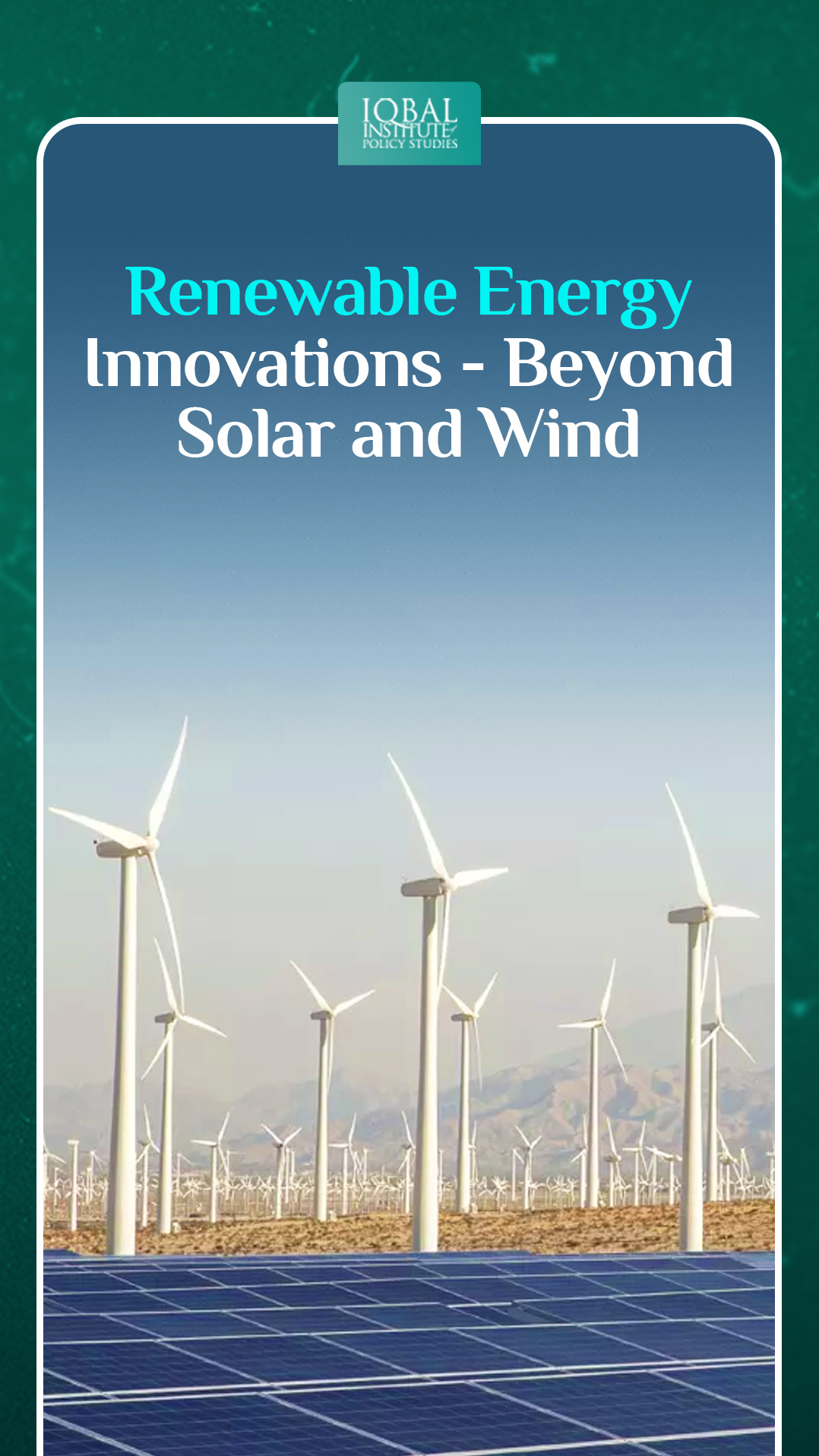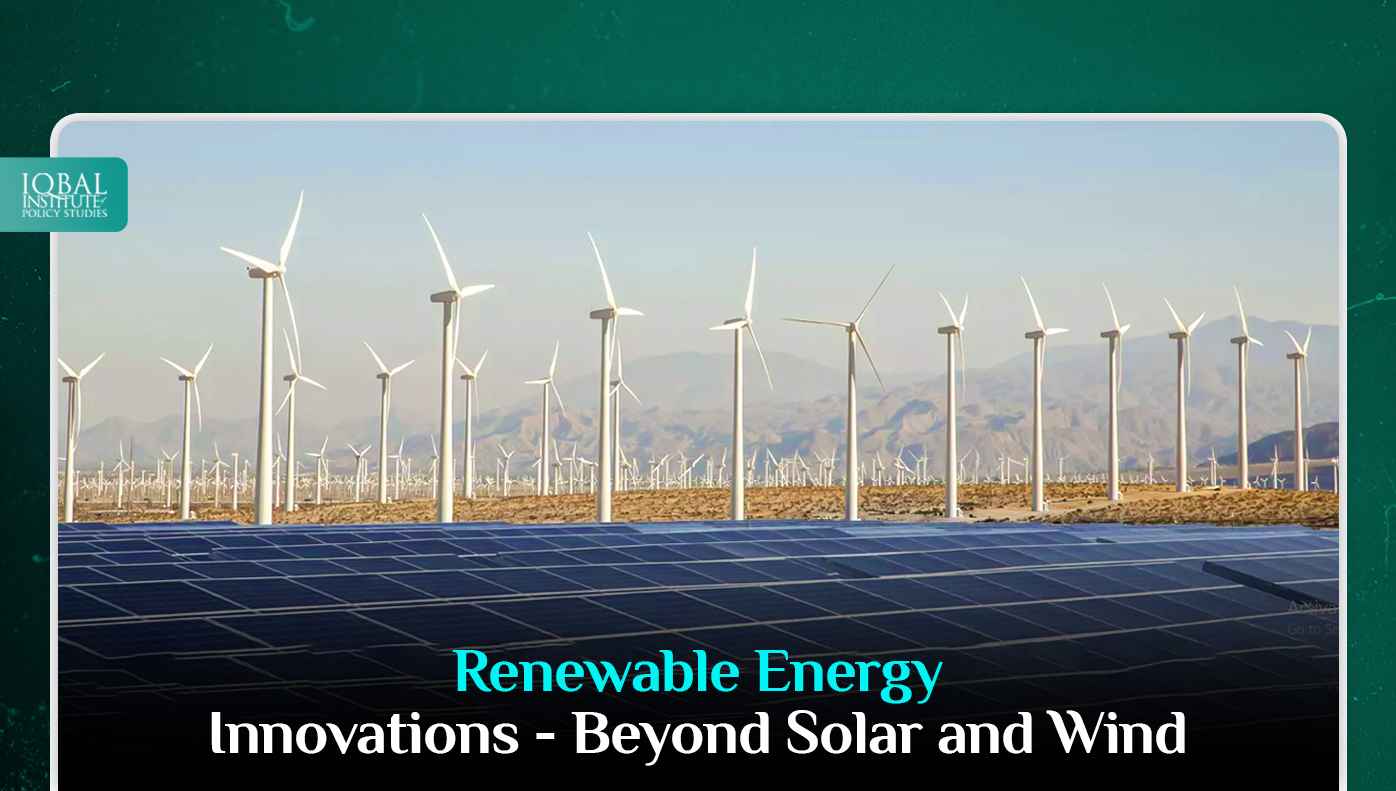In the quest for sustainable energy solutions, solar and wind power have undeniably taken center stage. These two renewable energy sources have rapidly gained traction due to their accessibility and environmental benefits. However, the world of renewable energy is far more diverse and dynamic than often portrayed. Beyond the iconic solar panels and majestic wind turbines lies a realm of innovative technologies that are pushing the boundaries of what’s possible. In this exploration, we delve into the fascinating realm of renewable energy innovations that extend beyond solar and wind, unveiling the potential to reshape our energy landscape.
The Need for Diversification
While solar and wind energy have made remarkable strides, it’s imperative to recognize that no single energy source is a panacea for the multifaceted challenges of energy generation. Reliability, efficiency, scalability, and geographical constraints underscore the importance of diversifying our renewable energy portfolio. As we continue to transition away from fossil fuels, it’s essential to explore alternative technologies that can complement solar and wind power, addressing gaps and unlocking new opportunities.
Geothermal Power: Harnessing Earth’s Heat
Geothermal energy harnesses the heat stored beneath the Earth’s surface to generate power. It’s a virtually untapped source that offers consistent and reliable energy production, irrespective of weather conditions. In regions with high geothermal activity, such as Iceland and parts of the United States, geothermal power plants generate electricity by utilizing steam and hot water extracted from deep wells. These plants provide a constant source of energy and contribute to reducing greenhouse gas emissions. Beyond electricity generation, geothermal energy also holds promise for direct heating and cooling applications in residential and commercial settings.
Hydropower Innovations: Small-Scale and Sustainable
While large-scale hydropower projects have long been utilized, innovative developments are shifting the focus to smaller, more sustainable solutions. Micro and mini hydropower systems leverage the flow of rivers and streams to generate electricity on a smaller scale. These systems are less environmentally intrusive and can be deployed in remote areas, providing localized power to communities. Furthermore, kinetic energy from ocean and tidal currents is being explored as a reliable and predictable source of energy. The development of underwater turbines and tidal stream generators demonstrates the potential of marine-based hydropower.
Biomass Energy: From Waste to Power
Biomass energy capitalizes on organic materials such as agricultural waste, wood chips, and even algae to produce heat and electricity. Beyond burning these materials, advanced technologies like gasification and anaerobic digestion convert biomass into biofuels and biogas, respectively. These fuels can be used for electricity generation or as substitutes for conventional fossil fuels in transportation. The utilization of biomass not only reduces waste but also contributes to carbon neutrality when managed sustainably.
Ocean Energy: Riding the Waves of Potential
Ocean energy encompasses a variety of technologies that harness the energy generated by ocean waves, tides, and temperature differentials. Wave energy converters capture the kinetic energy of waves, while tidal energy systems harness the gravitational forces of the moon and sun. Ocean thermal energy conversion (OTEC) uses the temperature difference between warm surface waters and cold deep waters to generate power. Although ocean energy technologies are still in their infancy, they hold immense potential for consistent and reliable energy generation.
Piezoelectricity and Kinetic Energy Harvesting
Innovations are also emerging at the intersection of energy and everyday motion. Piezoelectric materials can generate electricity when subjected to mechanical stress or vibrations. Integrating these materials into infrastructure such as roads, sidewalks, and even clothing can transform human movement into usable energy. Similarly, kinetic energy harvesting devices capture energy from ambient vibrations, whether in industrial settings or urban environments. These technologies highlight the potential to harness energy from the rhythms of daily life.
Emerging Storage Solutions
One of the significant challenges of renewable energy integration is the intermittency of sources like solar and wind. As the demand for energy varies throughout the day, innovative energy storage solutions are crucial for bridging the gap between production and consumption. Advanced battery technologies, such as lithium-ion and solid-state batteries, are revolutionizing energy storage, enabling the efficient capture and release of electricity. Moreover, energy storage systems can help stabilize the grid by providing backup power during peak demand or supply shortages.
The Role of Innovation and Investment
Renewable energy innovations hold the promise of revolutionizing our energy landscape, reducing carbon emissions, and mitigating climate change. However, their widespread adoption requires concerted efforts in research, development, and investment. Governments, industries, and research institutions must collaborate to bring these technologies from the lab to the market. Additionally, supportive policies, incentives, and regulatory frameworks play a vital role in accelerating the transition to a diversified and sustainable energy future.
Embracing a Diverse Energy Future
The journey towards a sustainable energy future extends beyond the sun and the wind. Embracing a diverse range of renewable energy innovations allows us to tap into Earth’s abundant resources while addressing the challenges of energy accessibility and environmental impact. Geothermal, hydropower, biomass, ocean energy, and emerging technologies like piezoelectricity all contribute to a mosaic of solutions that can power our world. As we venture into this exciting era of energy innovation, it’s imperative that we recognize the untapped potential beneath our feet, within our oceans, and even within the rhythms of our everyday lives. By doing so, we pave the way for a cleaner, greener, and more sustainable future for generations to come.
Conclusion
The horizon of renewable energy innovation stretches far beyond the familiar landscapes of solar panels and wind turbines. While these two stalwarts have rightly earned their place in the sustainable energy revolution, the diversity of our planet’s resources and the ingenuity of human creativity propel us to explore beyond their limits. Geothermal energy taps into the Earth’s inner heat, hydropower evolves to suit small-scale applications and marine environments, biomass transforms waste into power, and ocean energy harnesses the relentless rhythm of our oceans. Moreover, emerging technologies like piezoelectricity and advanced energy storage solutions hold the promise of transforming motion and intermittency into steady streams of electricity.
In the end, our journey toward a sustainable future is marked by a spectrum of solutions that honor the power of the Earth’s internal heat, the ebb and flow of tides, and the untapped potential in everyday movement. By expanding our understanding of renewable energy, we broaden the realm of possibility, creating pathways that lead us to a cleaner, greener, and more resilient world. The legacy we leave for generations to come is shaped not just by the energy we generate but by the innovation and unity we foster in the pursuit of a brighter future.
This article is written by Shahmeer Adnan. Shahmeer is a research analyst at the Iqbal Institute of Policy Studies (IIPS).



Leave a Reply